Dubai-based architecture firm ZNera Space has proposed a new type of contemporary symbol for the city: a green and natural landmark that serves as a “continuous metropolis” around Burj Khalifa. Dubbed “Downtown Circle“, the project features installing a giant ring-like structure of 550 meters in length around the world’s tallest free-standing structure. The structure will “investigate how at this critical time in the country’s development, architects, and urban planners can move away from previous urban models of isolated skyscrapers, towards a more humane typology that seeks to emulate nature and create diverse public spaces”.
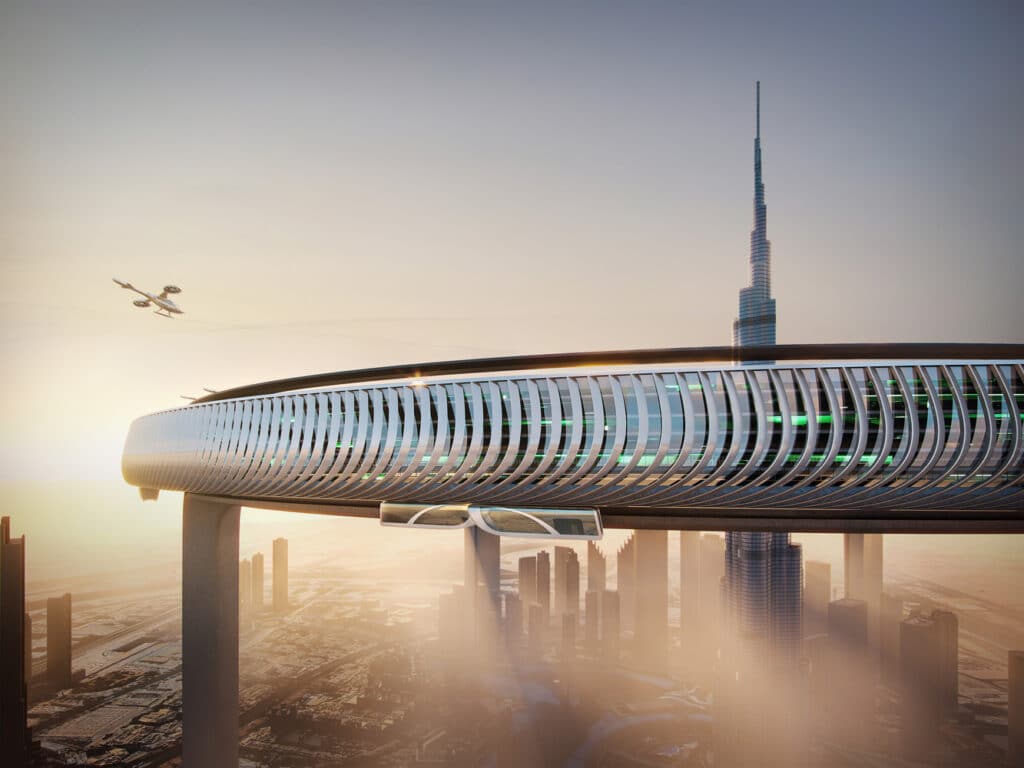
The project comes as a response to the continuous rise of the global population, and how the fabric of urban centers is changing, especially in Dubai, where rapid urbanization drive has prompted rapid urban growth characterized by skyscrapers and sprawl. The 550 meter tall mega structure offers an alternative to the singular and unconnected high-rises found in most metropolitan areas.
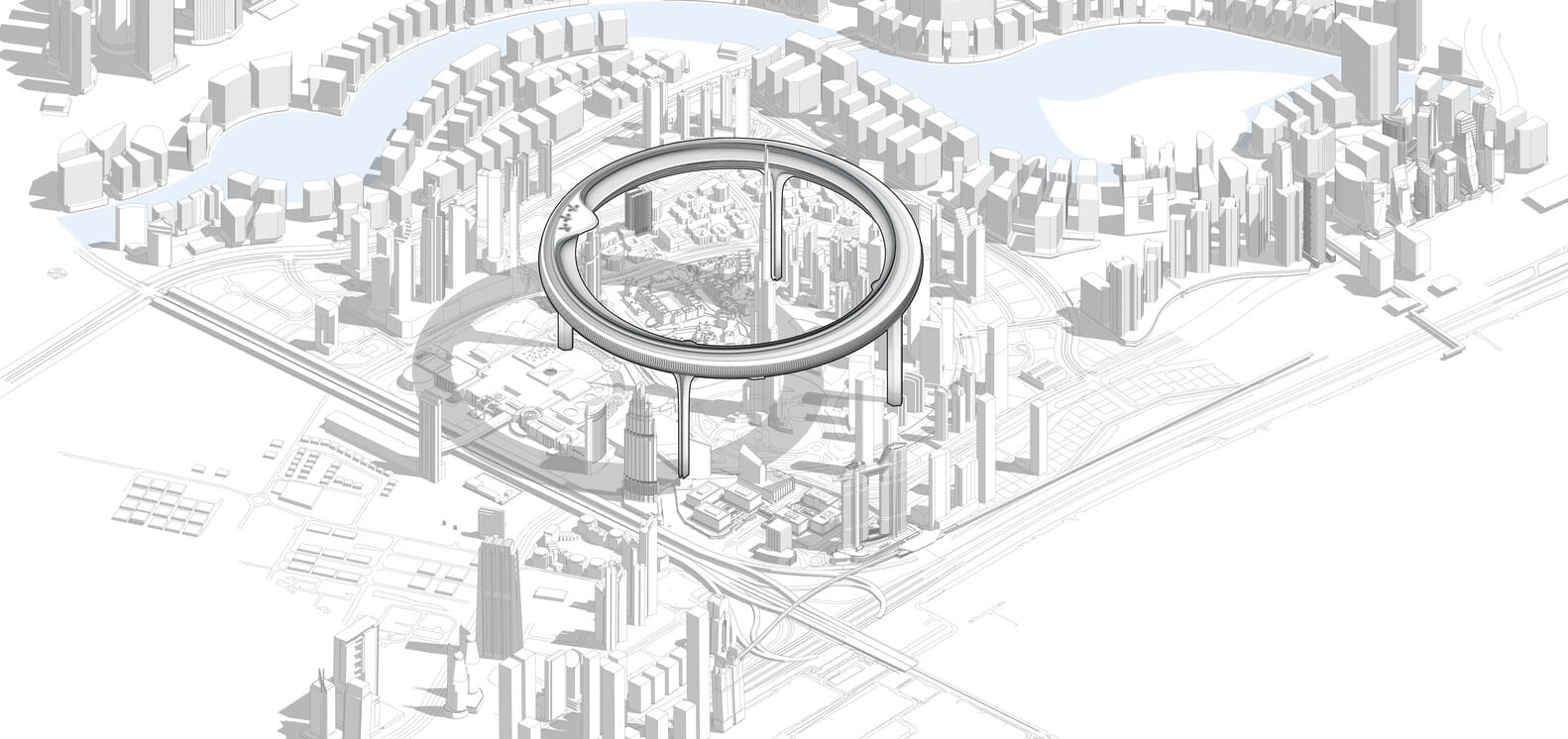

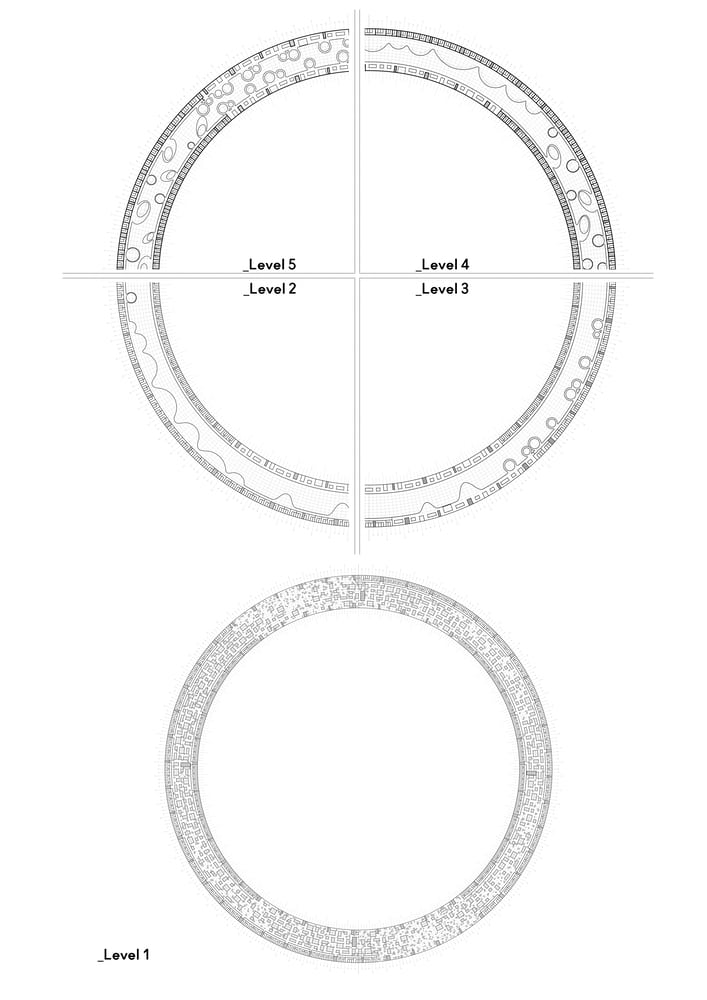
The structure’s diameter is 3 km. As it encircles the Burj Khalifa, it draws panoramic views and clean air from the skypark which forms the central spine of the development. The large scale of the structure is broken down into smaller units to create a variety of spaces to serve public, commercial, and cultural programs. The project offers a variety of office and housing typologies, from large offices and living/working units, to lofts, townhouses, and terraced houses.
The downtown circle project aims to establish a sustainable and a self sufficient vertical urbanism, creating a hyper-efficient urban center that gives back to the environment. The footprint of the building is composed of two main rings, which are held together by a a continuous green belt – the “skypark” – which is illuminated with natural light and has offices and research centers embedded in it. The “skypark” connects the floors with each other vertically, creating a connected three-dimensional urban green eco system.
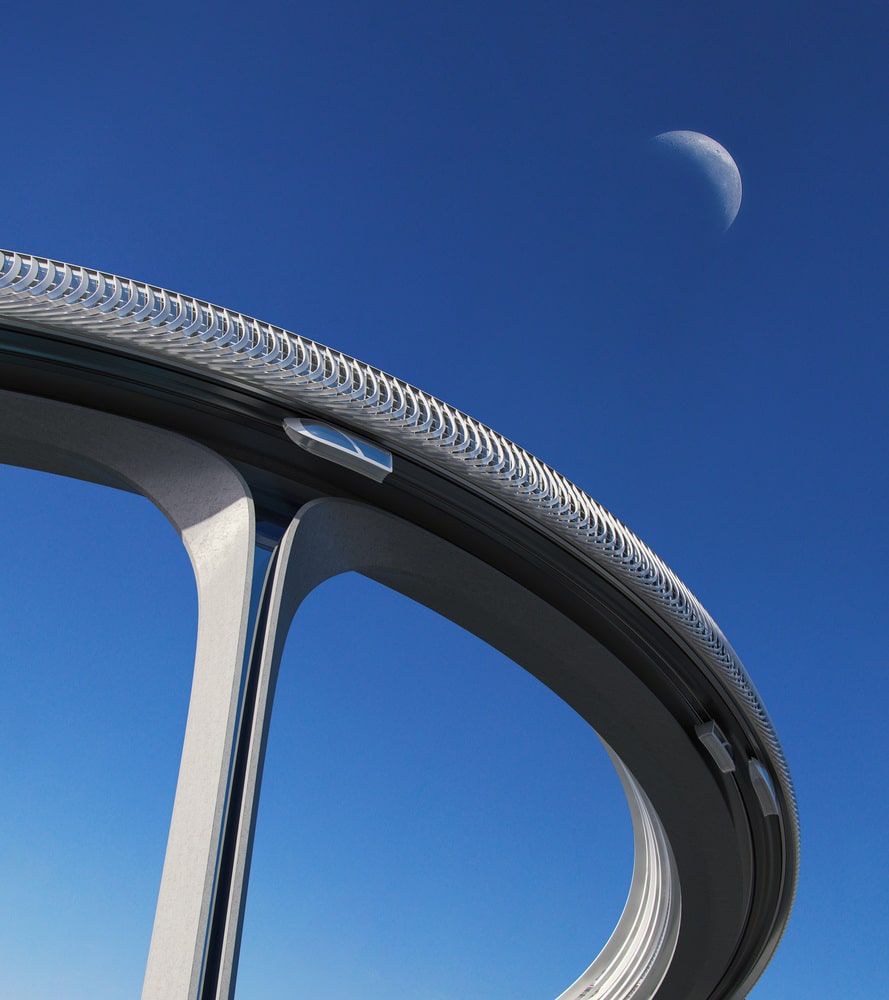

The concept is a potential answer to the global search for new, mixed urban typologies, which combine high densities and lavish greenery, dynamic urban functions and a high-quality user experience, following the demand for both climate protection and environmental excellence. Different climates are recreated inside the continuous skypark, where visitors can experience canyons, sandy dunes, and plants from various floras. Swamps, waterfalls, tropical vegetation, digital caves, cascades, fruit-trees, and flowers of various hues and species enrich the green eco system.
In order to give back to the natural environment, the plan includes proposed areas for rainwater harvesting and solar power. The design also stores carbon and filters pollutants from the air, in addition to providing sanctuaries for wild plants and food production. The Skypark within the structure will provide residents with a connection to nature and enable opportunities for outdoor recreation and a healthier lifestyle. Taking into account the coastal development and how vulnerable they are to rising sea levels, the proposed typology explores remedies and proposes a unique urban model in response to this threat.
As for transportation, a fleet of suspended peripheral pods transport passengers from one node to another within the Downtown circle. These suspended vessels travel through a network of rail at the bottom tier towards their destination. 20-passenger pods are loaded at the outer perimeter ring and are connected through a pressurized vessels attached to the main lift cores. These hyper pods can travel at speeds of 100 kilometers per hour, and capture a 360 view of the entire city at the height of 500 meters.

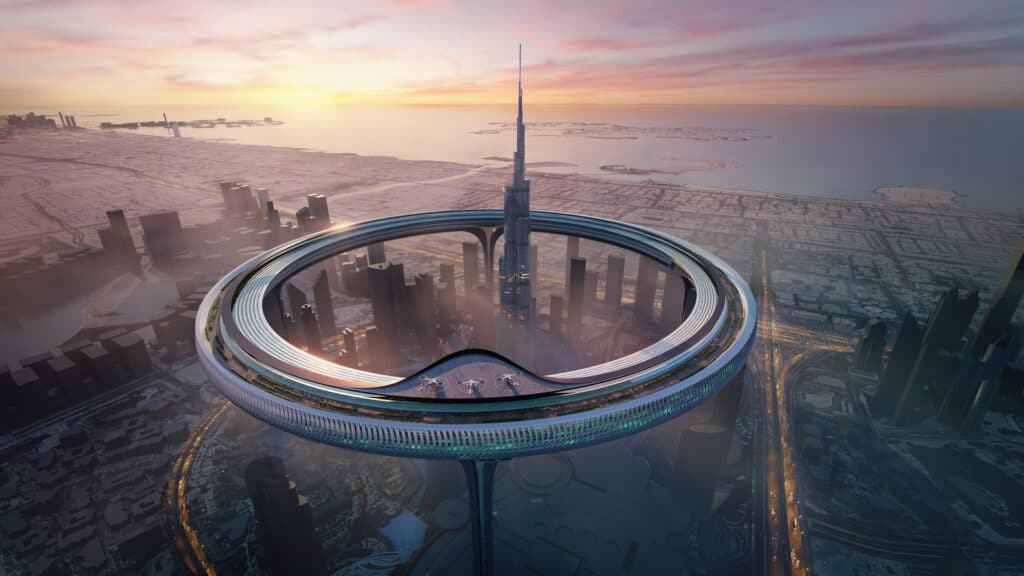
Amazing !
Outstanding work !
What is the Downtown Circle project proposed by Dubai-based architecture firm ZNera Space?